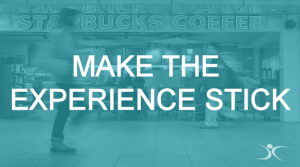
Photo Credit: iStockPhoto
To make an omelet, you have to break a few eggs. Many retailers aren’t willing to brave the mess.
Starbucks clearly is.
Last year, thanks to the My Starbucks Rewards program, the coffee giant enjoyed unprecedented sales increases. In Q3 2015 alone, the coffee giant’s net revenues rose 18%, to $4.9 billion.
Last month, still riding high, Starbucks announced it would stop rewarding frequency of visits and start rewarding dollars spent.
Starbucks had its reasons. From a business standpoint—based on transaction data and purchasing patterns the rest of us aren’t privy to—it’s a good bet this new rewards program makes perfect sense.
But among many card-carrying Starbucks loyalists, the news didn’t go over so well. People who once earned stars just for supporting the business took issue with the company’s decision to cater to its biggest spenders (or “core customers,” depending on your point of view).
What was it, exactly, that roiled so many Starbucks customers? Was it the change itself, or the way they learned of it?
More importantly, what happens now?
New Rewards Program Puts Customer Loyalty to the Test
Some argue that, despite the merits of Starbucks’ decision, the company introduced the change too abruptly, in the same tone-deaf way it has introduced other changes in the past:
Presenting the change in a manner that suggested “here’s the change you were asking for!” is also a recipe for upset customers. Starbucks has all the data for each rewards member, and it would have been easy to target low-dollar customers with a special message to soften the blow.
For all the hype about Big Data and personalization, it seems like brands often ignore their ability to target the needs of individual consumers.
Yes, Starbucks may lose a few customers over this. But most, in all likelihood, will stick with the brand. As the big spenders are motivated to spend even more, the impact will be far greater than that of a few disaffected people.
Over time, the benefits of the new stars-for-dollars program will become clear to Starbucks customers across the board. Loyalty will increase. And Starbucks will break its own revenue records.
Assuming, of course, the company fully capitalizes on this new opportunity.
Smart Suggestive Selling: That’s the (Bigger) Ticket
Before the My Starbucks Rewards program changed, customers needed to earn 12 stars to get a free item. Now, they need 125 stars. As others have pointed out, Starbucks has much more room to engage and entice its customers to rack up those stars and cement their relationship with the brand.
The old frequency-based rewards program presented opportunities for suggestive selling, but there was little incentive for customers to spend more. This new threshold lends itself well to building transaction amounts. Associates can now say, “You’re only 60 cents away from getting another star. These cookies will put you over the top.”
Talk about a win-win. Customers appreciate the help in earning more rewards—something that clearly benefits them—and associates feel empowered to build the sale.
But there’s an art to building the sale. Suggestive selling (done right) isn’t a hustle; it’s a sincere attempt to help.
Here’s how Starbucks associates can sell customers on the new rewards program (without the hard sell) and strengthen their loyalty.
- Make It Personal. Product knowledge is a powerful persuader. Sharing it is a great way to connect. If a customer homes in on an associate’s favorite coffee blend, nut bar, or breakfast sandwich, the associate should speak up.
- Make the Experience Stick. Here’s what customers appreciate and remember about great in-store experiences: an associate’s friendly demeanor, show of personality, and authentic concern. Customers equate genuine enthusiasm with brand pride. They not only feel good about purchasing, but they also look forward to returning again and again. This is suggestive selling at its best.
- Make It Consistently Great. Customers have come to expect a particular experience (i.e., atmosphere, product arrangement, and engagement) in Starbucks stores. But new initiatives require ongoing evaluation and refinement. Are associates attempting to cross sell? Are they doing it the way corporate expects? And are they doing it across locations, over time? These are the types of questions a mystery shopping program, developed and executed correctly, can answer with precision.
What’s Your Take on Starbucks’ Latest Move?
How do you see this new rewards program unfolding? How might Starbucks take advantage of new opportunities for customer engagement? We’d love to hear from you. Please share your thoughts in the comment section below.



